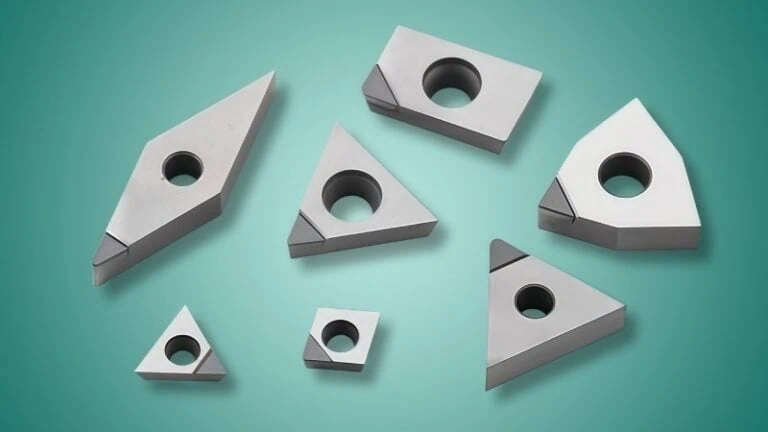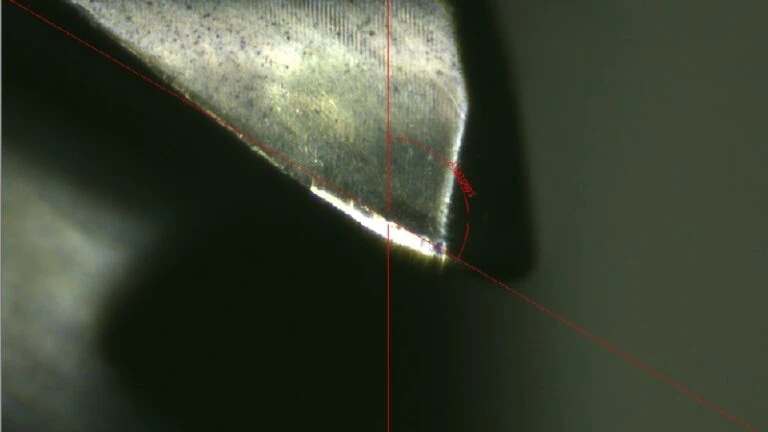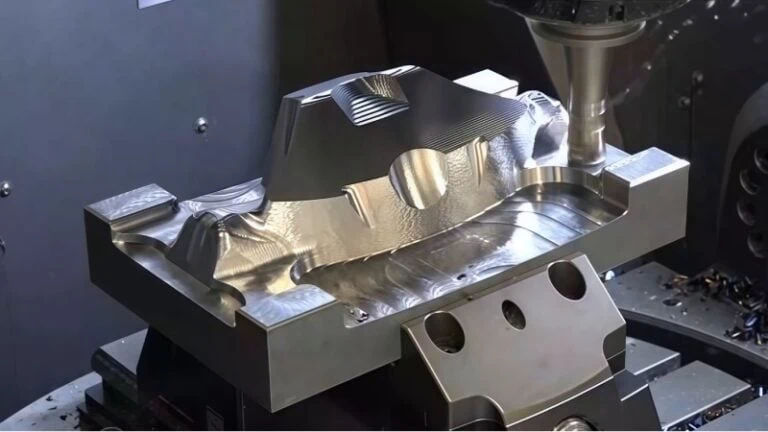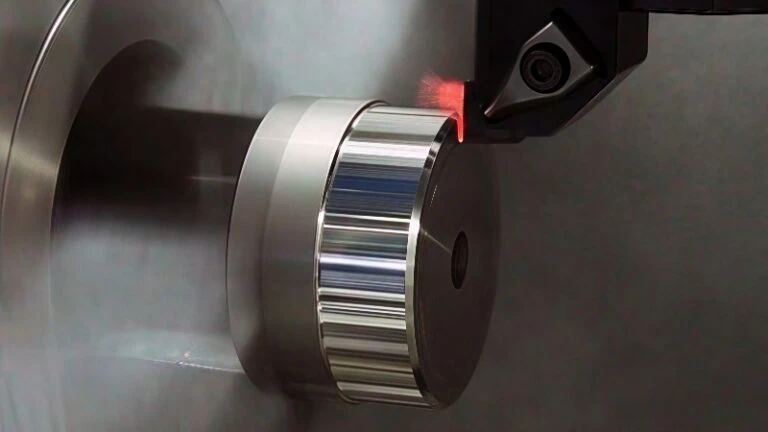-
Whatsapp: +86 13526572721
-
Email: info@zydiamondtools.com
-
Address: AUX Industrial Park, Zhengzhou City, Henan Province, China
-
Whatsapp: +86 13526572721
-
Email: info@zydiamondtools.com
-
Address: AUX Industrial Park, Zhengzhou City, Henan Province, China

Speeds & Feeds Calculator

Welcome to our online Speeds & Feeds Calculator. Getting the precise spindle speed (RPM) and feed rate for your machining project is key to improving finish quality, extending tool life, and optimizing overall efficiency. Enter your tool and material parameters below to get instant, scientific, and reliable results.
Understanding Spindle Speed and Feed Rate
What are the two most fundamental settings that control a cutting operation?
Spindle Speed (N) is the rate at which your cutting tool rotates, measured in revolutions per minute (rpm). In contrast, Feed Rate (Vf) is the speed at which the tool travels across or into the workpiece, measured in inches per minute (in/min) or millimeters per minute (mm/min). Together, they determine the efficiency, quality, and safety of any machining process.
Spindle Speed (N): The Rotational Factor
Think of spindle speed like the speed of a car’s tires spinning. It’s not about how fast the car is moving forward, but how quickly the tires themselves are rotating. In machining, the spindle holds the cutting tool, and its rotational speed is critical.
Consequently, setting the correct spindle speed is essential for managing heat. If the tool spins too fast, it can generate excessive friction and heat, leading to premature tool wear or even melting the material. On the other hand, a speed that is too slow can cause the tool’s cutting edges to chip or result in a poor surface finish on the part. The goal is to find a balance that allows the tool to cut cleanly and efficiently.
Feed Rate (Vf): The Forward Motion
Following the car analogy, if spindle speed is the tire’s rotation, then feed rate is the car’s actual speed down the road. It represents how quickly the spinning tool is advanced along its cutting path. This parameter directly controls how fast you can produce a part and the quality of its final surface.
A higher feed rate means faster production, as more material is removed in less time. However, feeding too quickly can put immense stress on the cutting tool, potentially causing it to break or leaving a rough, undesirable finish. Conversely, a feed rate that is too slow can lead to a process called “rubbing,” where the tool polishes the material instead of cutting it. This also generates excess heat and significantly shortens the tool’s effective life.
Decoding the Key Input Parameters
What information is needed to calculate the correct spindle speed and feed rate?
To accurately determine the ideal spindle speed and feed rate, four key parameters are required: the material’s Cutting Speed (Vc), the tool’s Feed per Tooth (Fz), the Tool Diameter (D), and the tool’s Number of Teeth (Z). Each one provides a critical piece of the puzzle for a successful machining operation.
These parameters work together to define the cutting conditions. Understanding each one is the first step toward moving from guessing to calculating.
| Parameter | Symbol | What It Is | Why It Matters |
|---|---|---|---|
| Cutting Speed | Vc | The speed at which the tool’s cutting edge moves across the material’s surface, measured in surface feet per minute (ft/min) or meters per minute (m/min). | This is determined by the material being cut and the tool material (e.g., carbide, HSS). Softer materials like aluminum allow for very high cutting speeds (e.g., 1000 ft/min), while hard materials like stainless steel require much lower speeds (e.g., 250 ft/min) to prevent tool failure. |
| Feed per Tooth | Fz | The thickness of the material that each tooth on the cutter removes in a single revolution. It is also known as “chip load.” | This value directly impacts your surface finish and material removal rate. A larger feed per tooth removes material faster but can create a rougher finish. A smaller value produces a smoother finish but increases machining time. |
| Diameter of Part | D | The diameter of the cutting tool itself, measured in inches or millimeters. | A larger tool has a greater circumference, meaning it must spin slower to achieve the same surface cutting speed as a smaller tool. It is a fundamental variable in the spindle speed formula. |
| Number of Teeth | Z | The total count of cutting edges (or flutes) on the tool. | More teeth allow the tool to take more “bites” per revolution, enabling a higher overall feed rate without increasing the chip load on any single tooth. For example, a 4-flute end mill can be fed faster than a 2-flute end mill at the same RPM and chip load. |
It is important to remember that recommended values for Cutting Speed (Vc) and Feed per Tooth (Fz) are starting points. These figures can vary based on the specific alloy of the material and the coating on your cutting tool. For this reason, it is always best practice to consult the technical data sheets provided by your tooling supplier to obtain the most accurate recommendations for your specific application.
The Core Formulas: How It All Works
How are spindle speed and feed rate mathematically calculated?
The calculations rely on two primary, industry-standard formulas. Spindle Speed (N) is derived from the material’s Cutting Speed (Vc) and the Tool Diameter (D). Subsequently, the Feed Rate (Vf) is calculated using the resulting Spindle Speed (N), the Number of Teeth (Z), and the Feed per Tooth (Fz).
Spindle Speed Formula
The first step is to calculate how fast the spindle needs to turn to achieve the desired surface speed at the tool’s outer edge.
The formula is:
N (rpm) = (Vc * 12) / (π * D)
- Vc (Cutting Speed): This is your target speed for the material.
- D (Diameter of part): The size of your tool.
- π (Pi): The mathematical constant (~3.14159).
- 12: This constant is used to convert the Cutting Speed from feet per minute to inches per minute, so that the units are consistent with the tool diameter in inches.
This formula essentially converts the desired linear speed at the tool’s cutting edge into a rotational speed for the entire tool.
Feed Rate Formula
Once you know how fast the tool is spinning, you can determine how quickly to move it through the material.
The formula is:
Vf (in/min) = N * Z * Fz
- N (Spindle Speed): The result from the first calculation.
- Z (Number of teeth): The number of flutes on your tool.
- Fz (Feed per tooth): The desired chip load for each tooth.
The logic here is straightforward. You are multiplying the speed of rotation by the number of cutting edges, and then by the amount of material each edge should cut. Consequently, this gives you the total distance the tool should travel in one minute.
A Practical Example: Machining Aluminum
How do these calculations apply to a real-world machining job?
For a common task like milling a slot in 6061 aluminum with a 1/2-inch, 4-flute carbide end mill, the standard formulas yield a starting spindle speed of approximately 7639 RPM and a feed rate of about 61 in/min. This provides a data-driven starting point for the operation, which can then be fine-tuned.
Let’s break down the process step-by-step.
Step 1: Gather Your Parameters
First, we need to define our inputs based on the job.
- Material: 6061 Aluminum
- Tool: 1/2″ Diameter, 4-Flute Solid Carbide End Mill
Now, we select our cutting parameters, often from a tooling supplier’s chart.
- Diameter of part (D): 0.5 in
- Number of teeth (Z): 4
- Cutting speed (Vc): A typical starting value for carbide cutting 6061 aluminum is 1000 ft/min.
- Feed per tooth (Fz): For general-purpose milling in aluminum, a moderate chip load of 0.002 in/tooth is a reliable choice.
Step 2: Calculate Spindle Speed (N)
Next, we use the spindle speed formula with our chosen parameters.
N = (1000 * 12) / (3.14159 * 0.5) ≈ 7639 RPM
So, the calculated target spindle speed is 7639 RPM.
Step 3: Calculate Feed Rate (Vf)
Finally, we use the calculated spindle speed to find our feed rate.
Vf = 7639 * 4 * 0.002 ≈ 61.1 in/min
The resulting feed rate is approximately 61 inches per minute.
Step 4: Interpreting the Results
These calculated values—7639 RPM and 61 in/min—are not just numbers; they are your starting point for setting up the CNC machine. In a practical setting, a machinist would program these values and then observe the initial cut. Is the machine running smoothly, or is there a loud, vibrating noise known as “chatter”? Is the surface finish clean? Based on these real-world observations, the machinist might slightly adjust the speed or feed to optimize the cut for their specific machine’s rigidity and setup.
Frequently Asked Questions (FAQ)
Why is my calculated spindle speed so high?
A very high RPM is common when using small-diameter tools or machining soft materials like aluminum and plastics, which have high recommended cutting speeds. If the calculated RPM exceeds your machine’s maximum capability, you should set the spindle to its highest available speed. Then, to maintain the correct chip load, you must recalculate the feed rate using your machine’s actual maximum RPM.
What cutting speed (Vc) should I use for steel?
The correct cutting speed for steel is highly dependent on its specific type. For instance, a common material like mild steel can often be machined with a carbide tool at around 400-600 ft/min. However, for much harder materials like AR500 steel or stainless steel, the cutting speed must be reduced significantly, often to 150-300 ft/min, to manage heat and prevent tool damage. Always refer to tooling supplier charts for the specific grade of steel you are using.
What happens if my feed rate is too high or too low?
An incorrect feed rate can cause several problems. If the feed rate is too high, it can lead to excessive force on the tool, causing it to deflect, chatter, or even break, while also producing a poor surface finish. In contrast, if the feed rate is too low, the tool’s cutting edges will rub against the material instead of shearing it cleanly. This generates a great deal of heat and causes the tool to dull very quickly.
Does the depth of cut affect these calculations?
While depth of cut is not a direct input in the core speed and feed formulas, it is an extremely important related factor. The values you calculate are a baseline. For very deep cuts (known as roughing), you may need to decrease the feed rate to reduce the load on the tool and ensure chips can be cleared effectively. Conversely, for very shallow finishing passes, you can often increase both the speed and feed rate to achieve a better finish and reduce cycle time.




